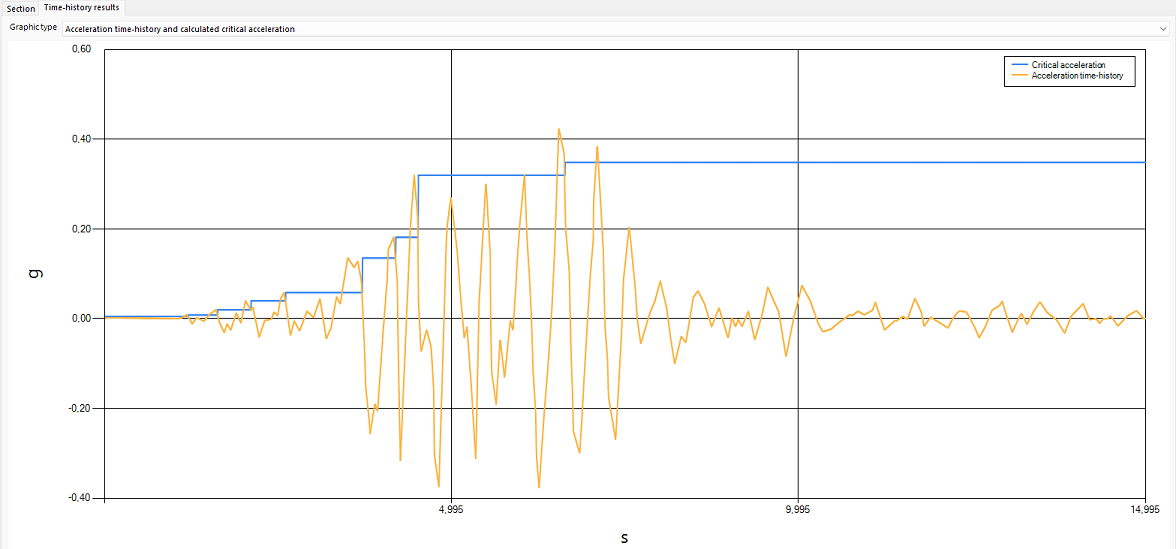When a dynamic acceleration time-history is considered, the wall movement occurs in the time intervals when the ground acceleration exceeds a critical threshold, which varies during the seismic excitation (Conte, Pugliese and Troncone, 2022). In particular, the critical thresholds increases during the earthquake according to the following simple rules:
1.at the beginning of the earthquake, the critical acceleration assumes an initial value, which has to be given as input by the user. This parameter has to be set to 0 for a retaining wall of new construction. On the contrary, it has to be taken equal to the maximum acceleration that acted on the retaining wall during the previous earthquakes hitting the structure. However, lacking more accurate information, the assumption of the value 0 also for existing structures leads to precautionary results. Indeed, the greater the initial critical acceleration, the smaller the earthquake-induced permanent displacement.
2.when the ground acceleration exceeds the actual threshold, this latter is initially kept constant
3.when the ground acceleration returns below the critical threshold, this latter is updated and taken equal to the maximum value of ground acceleration that has just occurred
4.the critical threshold cannot never exceed an upper bound, corresponding to the limit equilibrium condition. This latter is calculated as explained by Conte, Troncone and Vena (2017).
The example shown in the following figure aims at better explaining the above described procedure.

Comparison between the input ground acceleration and the calculated critical threshold